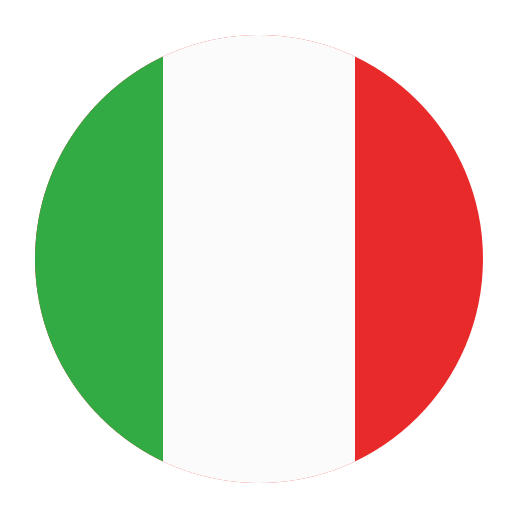Learning a new language is an exciting journey, and one of the most practical ways to immerse yourself in a new language is by learning the vocabulary of everyday items. If you are learning Italian, familiarizing yourself with common household items can not only expand your vocabulary but also make your daily life more interesting as you begin to think and describe your surroundings in Italian. This article will guide you through some of the most common household items in Italian, complete with their translations and some context on how they are used.
The Living Room (Il Soggiorno)
The living room is often the heart of the home, a place where families gather to relax and socialize. Here are some common items you might find in an Italian living room:
– **Il divano** – The couch or sofa. This is where you and your family might sit to watch television or have conversations.
– **La poltrona** – The armchair. A comfortable seat for one person, often placed near the couch.
– **Il tappeto** – The carpet or rug. This item adds warmth and comfort to the living room floor.
– **Il tavolino** – The coffee table. Usually placed in front of the couch, it holds magazines, remote controls, and sometimes your coffee cup.
– **La lampada** – The lamp. It provides lighting, especially useful in the evenings.
– **Il televisore** – The television. A central entertainment device in many living rooms.
Example Sentences:
– “Mi piace rilassarmi sul **divano** dopo una lunga giornata di lavoro.” (I like to relax on the **couch** after a long day of work.)
– “Accendi la **lampada**, per favore.” (Turn on the **lamp**, please.)
The Kitchen (La Cucina)
The kitchen is another crucial part of the home, full of items essential for cooking and dining. Here are some key terms:
– **Il frigorifero** – The refrigerator. Essential for keeping your food fresh.
– **Il forno** – The oven. Used for baking and roasting.
– **Il fornello** – The stove or cooktop. Where you cook food in pots and pans.
– **La lavastoviglie** – The dishwasher. It helps you clean dishes more efficiently.
– **Il lavandino** – The sink. For washing dishes and hands.
– **Il microonde** – The microwave. For quickly heating food.
– **La pentola** – The pot. Used for boiling or cooking food on the stove.
– **La padella** – The pan. Used for frying or sautéing food.
Example Sentences:
– “Metti il latte nel **frigorifero**, per favore.” (Put the milk in the **refrigerator**, please.)
– “Devo pulire i piatti nella **lavastoviglie**.” (I need to clean the dishes in the **dishwasher**.)
The Bedroom (La Camera da Letto)
The bedroom is your personal sanctuary, a place for rest and relaxation. Here are some common items you will find:
– **Il letto** – The bed. The main piece of furniture for sleeping.
– **Il cuscino** – The pillow. Provides comfort for your head while sleeping.
– **La coperta** – The blanket. Keeps you warm at night.
– **Il comodino** – The nightstand. A small table next to the bed.
– **L’armadio** – The wardrobe or closet. For storing clothes.
– **La lampada da comodino** – The bedside lamp. Provides light for reading or other activities in bed.
Example Sentences:
– “Metti il libro sul **comodino**.” (Put the book on the **nightstand**.)
– “Ho bisogno di una nuova **coperta** per l’inverno.” (I need a new **blanket** for the winter.)
The Bathroom (Il Bagno)
The bathroom is an essential room in any household, equipped with various items for hygiene and personal care:
– **Il lavandino** – The sink. Used for washing your hands and face.
– **La doccia** – The shower. Where you bathe.
– **La vasca da bagno** – The bathtub. Another option for bathing.
– **Il water** – The toilet. Essential for sanitation.
– **Lo specchio** – The mirror. For checking your appearance.
– **L’asciugamano** – The towel. Used for drying off after a bath or shower.
– **Lo spazzolino da denti** – The toothbrush. For cleaning your teeth.
– **Il dentifricio** – The toothpaste. Used with the toothbrush to clean your teeth.
Example Sentences:
– “Devo comprare un nuovo **spazzolino da denti**.” (I need to buy a new **toothbrush**.)
– “La **doccia** non funziona.” (The **shower** is not working.)
The Dining Room (La Sala da Pranzo)
The dining room is where families and friends gather to enjoy meals together. It contains various items related to dining:
– **Il tavolo da pranzo** – The dining table. The central piece of furniture where meals are served.
– **Le sedie** – The chairs. Placed around the dining table for seating.
– **Il piatto** – The plate. Used to serve food.
– **Il bicchiere** – The glass. Used to drink beverages.
– **La forchetta** – The fork. Used for eating.
– **Il coltello** – The knife. Used for cutting food.
– **Il cucchiaio** – The spoon. Used for eating soups or desserts.
Example Sentences:
– “Metti i **piatti** sul **tavolo da pranzo**.” (Put the **plates** on the **dining table**.)
– “Hai bisogno di un **cucchiaio** per la zuppa?” (Do you need a **spoon** for the soup?)
The Home Office (L’Ufficio di Casa)
With more people working from home, the home office has become an important space in many households. Here are some useful terms:
– **La scrivania** – The desk. The main workspace.
– **La sedia da ufficio** – The office chair. Provides seating at the desk.
– **Il computer** – The computer. Essential for most modern work tasks.
– **La stampante** – The printer. Used for printing documents.
– **Il quaderno** – The notebook. For jotting down notes.
– **La penna** – The pen. Another tool for writing.
Example Sentences:
– “Ho bisogno di una nuova **stampante** per l’ufficio.” (I need a new **printer** for the office.)
– “Il mio **computer** è molto lento oggi.” (My **computer** is very slow today.)
Miscellaneous Items (Articoli Vari)
Here are some other common household items that don’t fit neatly into one room category but are useful to know:
– **Il telefono** – The telephone. For making and receiving calls.
– **Le chiavi** – The keys. Essential for locking and unlocking doors.
– **La borsa** – The bag. Used for carrying personal items.
– **Il libro** – The book. For reading.
– **Il giornale** – The newspaper. For staying updated with the news.
– **La sveglia** – The alarm clock. For waking up on time.
– **Il telecomando** – The remote control. For operating the television.
Example Sentences:
– “Non riesco a trovare le mie **chiavi**.” (I can’t find my **keys**.)
– “Puoi passarmi il **telecomando**?” (Can you pass me the **remote control**?)
Conclusion
Learning the names of common household items in Italian can greatly enhance your vocabulary and help you feel more comfortable using the language in everyday contexts. By integrating these terms into your daily life, you can make your language learning experience more practical and engaging. Practice using these words in sentences, label items around your house with their Italian names, and try to think in Italian as you go about your daily routine. Buona fortuna! (Good luck!)

